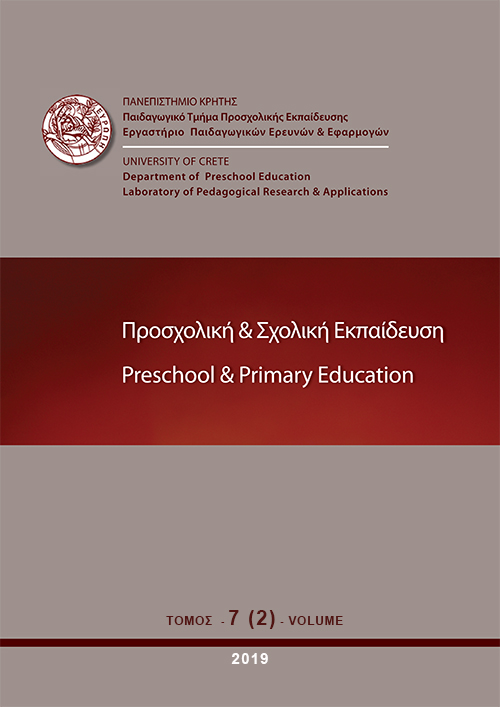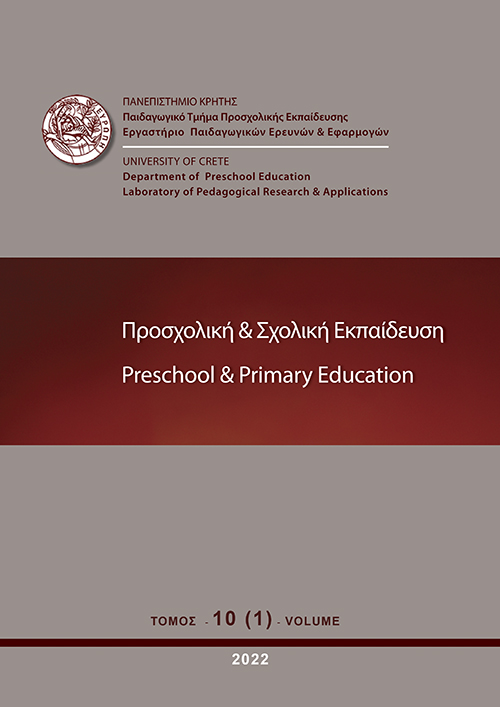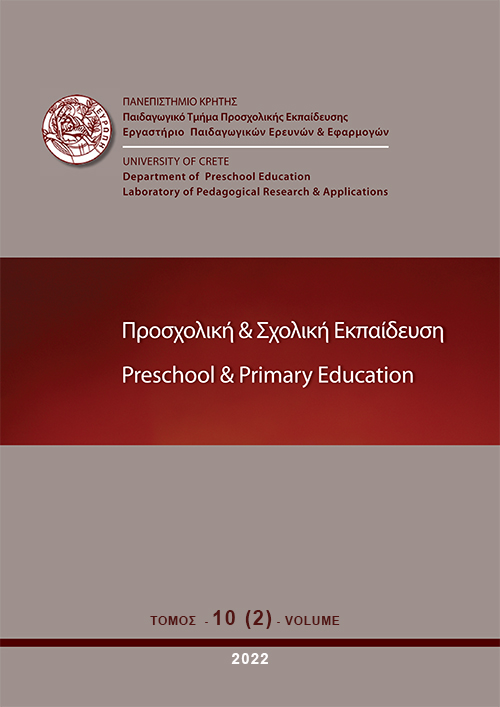Η διερεύνηση της δημιουργικότητας των μαθητών Δημοτικού μέσω ψυχομετρικής και συναινετικής αξιολόγησης – Ο ρόλος της ακαδημαϊκής επίδοσης
Abstract
Καθώς η δημιουργικότητα αποτελεί μία από τις βασικές δεξιότητες του νέου αιώνα, το σύγχρονο σχολείο καλείται να αναγνωρίσει, να ενθαρρύνει και να καλλιεργήσει τις δημιουργικές ικανότητες των μαθητών. Στην παρούσα εργασία διερευνήθηκε η δημιουργικότητα 202 μαθητών της Ε’ και της Στ’ τάξης από Δημοτικά σχολεία της Αθήνας και η σχέση της με την ακαδημαϊκή τους επίδοση. Ειδικότερα, η δημιουργική ικανότητα αξιολογήθηκε με τη χρήση του ψυχομετρικού Τεστ Δημιουργικής Σκέψης Torrance και μέσω Συναινετικής Τεχνικής Αξιολόγησης, με δασκάλους και εικαστικούς σε ρόλο ειδημόνων. Τα αποτελέσματα έδειξαν ότι οι αξιολογήσεις μεταξύ των εκπαιδευτικών παρουσίαζαν υψηλή, θετική και στατιστικά σημαντική συσχέτιση, αλλά και θετική συσχέτιση με τις ακαδημαϊκές επιδόσεις των παιδιών. Από την άλλη πλευρά, από τις αναλύσεις φάνηκε ότι οι επιδόσεις των μαθητών στο τεστ Torrance εμφάνιζαν μικρή και στατιστικά σημαντική συσχέτιση ανάμεσα με τις αξιολογήσεις των εικαστικών, αλλά μη στατιστικά σημαντική σχέση με τις αξιολογήσεις των δασκάλων και τις ακαδημαϊκές επιδόσεις των παιδιών. Συμπερασματικά διαπιστώθηκε ότι οι δάσκαλοι αξιολογούν τη δημιουργικότητα χρησιμοποιώντας διαφορετικά κριτήρια από εκείνα του ψυχομετρικού εργαλείου. Oι εικαστικοί, αν και τείνουν να μοιράζονται παρόμοια κριτήρια αξιολόγησης με τους δασκάλους τα οποία απαντούν ως ένα βαθμό και στην εκπαιδευτική αξιολόγηση της ακαδημαϊκής επίδοσης, φαίνεται να λαμβάνουν υπόψη σε μικρότερο βαθμό και ορισμένα από τα κριτήρια του τεστ Torrance. Τέλος, οι διαστάσεις της δημιουργικότητας που αξιολογήθηκαν ψυχομετρικά δεν φαίνεται να λαμβάνονται υπόψη κατά την αξιολόγηση της ακαδημαϊκής επίδοσης.
Article Details
- Zitationsvorschlag
-
Ζμπάινος Δ., Μπελογιάννη Β., & Κατσαμπάνης Π. (2019). Η διερεύνηση της δημιουργικότητας των μαθητών Δημοτικού μέσω ψυχομετρικής και συναινετικής αξιολόγησης – Ο ρόλος της ακαδημαϊκής επίδοσης. Preschool and Primary Education, 7(2), 139–154. https://doi.org/10.12681/ppej.20464
- Ausgabe
- Bd. 7 Nr. 2 (2019)
- Rubrik
- Άρθρα

Dieses Werk steht unter der Lizenz Creative Commons Namensnennung - Nicht-kommerziell - Weitergabe unter gleichen Bedingungen 4.0 International.
Οι συγγραφείς των άρθρων που δημοσιεύονται στο ΠΡΟΣΧΟΛΙΚΗ & ΣΧΟΛΙΚΗ ΕΚΠΑΙΔΕΥΣΗ διατηρούν τα δικαιώματα πνευματικής ιδιοκτησίας επί των άρθρων τους, δίνοντας στο περιοδικό το δικαίωμα της πρώτης δημοσίευσης. Άρθρα που δημοσιεύονται στο ΠΡΟΣΧΟΛΙΚΗ & ΣΧΟΛΙΚΗ ΕΚΠΑΙΔΕΥΣΗ διατίθενται με άδεια Creative Commons 3.0 και σύμφωνα με την άδεια μπορούν να χρησιμοποιούνται ελεύθερα, με αναφορά στο/στη συγγραφέα και στην πρώτη δημοσίευση για μη κερδοσκοπικούς σκοπούς και με δικαίωμα τροποποίησης μόνον με παρόμοια διανομή (αν αναμείξετε, τροποποιήσετε, ή δημιουργήσετε πάνω στο υλικό, πρέπει να διανείμετε τις δικές σας συνεισφορές υπό την ίδια άδεια όπως και το πρωτότυπο). To Εργαστήριο Παιδαγωγικών Ερευνών και Εφαρμογών του Παιδαγωγικού Τμήματος Προσχολικής Εκπαίδευσης του Πανεπιστημίου Κρήτης και το Εθνικό Κέντρο Τεκμηρίωσης διατηρούν το δικαίωμα να δημοσιεύουν, να αναπαραγάγουν, να παρουσιάζουν στο κοινό, να διανέμουν και χρησιμοποιούν άρθρα που δημοσιεύονται στο ΠΡΟΣΧΟΛΙΚΗ & ΣΧΟΛΙΚΗ ΕΚΠΑΙΔΕΥΣΗ σε οποιοδήποτε μέσο και μορφή είτε μεμονωμένα είτε ως μέρη συλλογικών έργων, για όλο το χρόνο διάρκειας προστασίας της πνευματικής ιδιοκτησίας και για όλες τις χώρες του κόσμου. Αυτό περιλαμβάνει ενδεικτικά και όχι αποκλειστικά, το δικαίωμα δημοσίευσης των άρθρων σε τεύχη του περιοδικού ΠΡΟΣΧΟΛΙΚΗ & ΣΧΟΛΙΚΗ ΕΚΠΑΙΔΕΥΣΗ, αναπαραγωγής και διανομής μεμονωμένων αντιγράφων των άρθρων, αναπαραγωγής ολόκληρων των άρθρων σε άλλη έκδοση του Εργαστηρίου Παιδαγωγικών Ερευνών και Εφαρμογών του Παιδαγωγικού Τμήματος Προσχολικής Εκπαίδευσης του Πανεπιστημίου Κρήτης και του Εθνικού Κέντρου Τεκμηρίωσης και αναπαραγωγής και διανομής των άρθρων ή περίληψης αυτών με χρήση πληροφορικού συστήματος αποθετηρίου.





